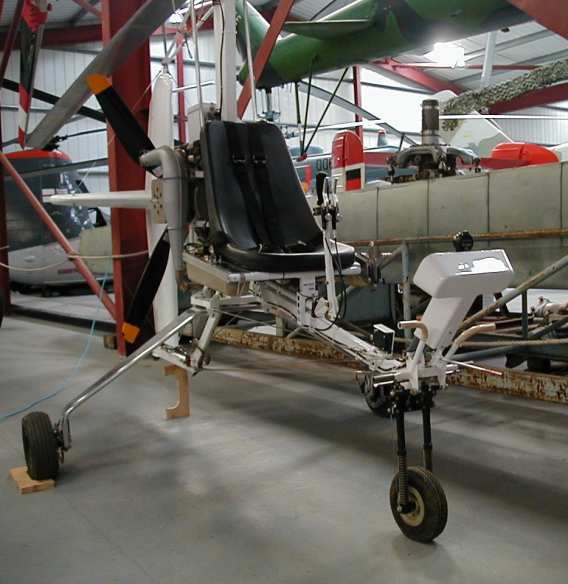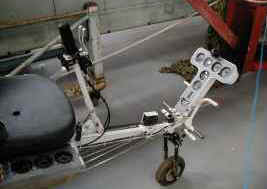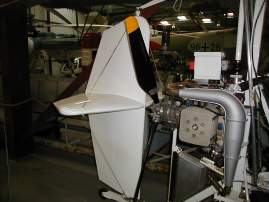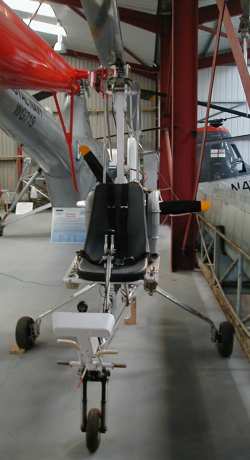 |
|
The little-known
Hornet single-seat Gyroplane was designed and developed, as a
private venture, by civil engineer Richard Husband at Rivelin,
Sheffield, in the UK, between 1997 and 2003.
The sophisticated design of the machine, which was powered by
a 65hp Arrow GT500R 2-stroke, 2-cylinder, piston engine, was intended
to improve on many aspects of the performance of current light
autogyros. It incorporated composite components, an Arplast three-bladed
pusher airscrew, full instrumentation and provision for pre-rotating
the lifting rotor to facilitate a "jump" takeoff.
The Hornet was never licensed but it undertook taxiing trials
in July 2002, probably becoming airborne for brief periods. Encouraged
by these tests Husband started to plan further refinements including
a four-bladed airscrew but, sadly, he died in 2003.
The Gyroplane, with photographs and other documents, was donated
to The Helicopter Museum by the Husband family, arriving in November
in 2004. |
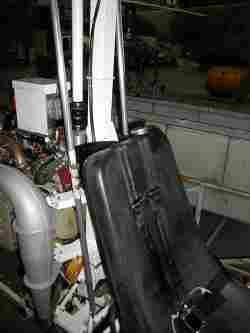 |
|
| The pilot's seat, formed from hollow plastic, served
as a 2-stroke fuel tank. The filler cap is visible (left)
on top of the backrest. For pre-rotation, a jointed shaft,
belt-driven from the engine, drove the hub of the rotorhead.
The large tail unit (below) was intended to counter the
resulting rotor torque. |
|
|
|
